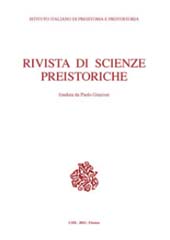Article
Digital Version
Download | NO Copy/paste | Printing
Le figure incise del Pleistocene finale-inizio Olocene in Valcamonica
P. 1-30
- Valcamonica is a glacial alpine valley in northern Italy and has one of the biggest prehistoric open air rock art concentrations of Europe. Indeed, the presence of this animal suggests the presence of open humid areas, rich in water, that probably developed after the Last Glacial Maximum, as confirmed by the faunal remains found in few other sites of northern Italy and by the few available palaeoclimatic data. Moreover, the presence of the elk in the graphic repertoire provides a key chrono-cultural reference, suggesting links with more sites both in Italy and in Europe, where elk representations were discovered on portable objects or on cave walls.
- Its long and uninterrupted rock art production is rooted in the late Pleistocene-early Holocene, showing strong links with the Palaeolithic art tradition. All the known figures belonging to this phase are located in the Luine hill in Darfo-Boario Terme, in the lower valley, and they are all concentrated into two rocks: Rock No. 6 and Rock No. 34. Sixty years after their discovery, a new systematic research was undertaken producing an updated documentation of the most ancient figures. These recording and analysis activities led to significantly update the number of the known figures, up to 15, recognising a variety of figurative categories, including deer (2), elk (9), fish (2), caprid (1) and abstract motifs (1). So, Luine hill has also the richest concentration of elk figures of the Late Pleistocene of Europe known so far, offering an important insight into a disappeared landscape too.
- The new rock art recording led even to clarify the used techniques to make the graphic units; define the relative chronology of the rock art palimpsests, recognising two graphic phases at least for the most ancient artistic production of Valcamonica whose maximum age can be established around c. 17.000 years BP; fix the rock art evidence in the wide archaeological scenario of both the Alpine and Italian contexts. Thematic and stylistic comparisons reveal how much the whole record of the Late Pleistocene-Early Holocene figures of Luine are coherent with the European Palaeolithic art tradition, especially the one of west-central Europe. Coversely, they show no links with the more recent rock art production of the Valcamonica.
- Therefore, within this review, authors also highlight the need to avoid any use of the definition of "Proto-Camunnian" to call the most ancient period of the Valcamonica rock-art. Lastly, the study of the oldest engravings of Luine provides a privileged perspective over those populations that arrived in the Valcamonica soon after the Late Glacial Maximum, favouring the understanding of the human and cultural dynamics of this period on a medium and large scale, and encompassing the processes of both diffusion an symbolic elaboration, continuously stimulated by the lived context. [Publisher's text]
-
Information
DOI: 10.32097/1215
ISSN: 2282-457X
KEYWORDS
- Arte rupestre, Italia settentrionale, Paleolitico superiore, Mesolitico, Cervo, Alce
- Rock art, Northern Italy, Upper Palaeolithic, Mesolithic, Deer, Elk.
-
In this issue
- The Neolithic settlement of Ozzano dell'Emilia (Bologna) : a site at a crossroads of interactions in the Po plain
- A reassessment of the relative chronology of the Sardinian Middle Bronze Age : results from the excavations of Nuraghe Sa Conca 'e sa Cresia (Siddi, Sardinia)
- La necropoli del Bronzo finale di Campo Pianelli di Bismantova alla luce dei dati antropologici
- Nuclei familiari e popolazione di villaggio nel mondo terramaricolo : un approccio demografico basato sul rapporto tra persone e spazi domestici
- Le figure incise del Pleistocene finale-inizio Olocene in Valcamonica
- Teorie e nuovi metodi per la revisione dell'arte mobiliare paleolitica : il caso di Grotta Romanelli e il progetto Dec.O.


